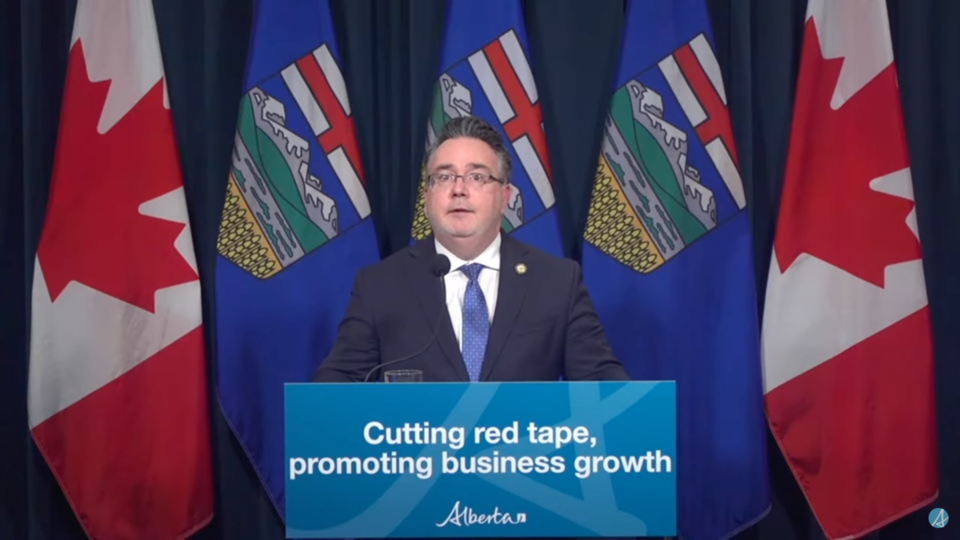Morinville — St. Albert MLA and Service Alberta and Red Tape Reduction Minister Dale Nally announced a new toolkit to automatically approve certain permits in Alberta, as well as introduce time limits for when a permit must be approved or denied.
The "Automatic Yes" toolkit was announced at a news conference on Jan. 28 held by Nally.
The minister said that they set out to review the permit processes across the government after hearing from "business leaders and industry stakeholders" about long wait times, confusing application requirements, and there often being a need for multiple permits from various government ministries and agencies.
"The foundation of this Automatic Yes toolkit consists of three approaches to support reduction in permit decision and approval timelines," Nally said. He said that activities will be graded from low risk activities that pose minimal harm to the environment and public safety, to medium risk activities that will require "more extensive review as well as oversight."
There is nothing in the new toolkit that removes the ability of government to deny permits, Nally said.
The three approaches in the toolkit are Code of Practice (COP), Permit-by-Rule (PBR), and Shot Clock.
"Code of Practice establishes a set of rules that must be followed to carry out an activity where the individual or operator can proceed with the activity without specific approval, but they are required to meet all established operating requirements," Nally said. "At most, government may just need to be notified of the activity prior to starting."
The Permit-by-Rule approach requires the government to be notified of the activity, but also may require some additional information or technical documentation to be submitted, Nally said. But activities under this approach will still be allowed to begin without having to receive a formal permit or approval from government.
Nally said that those two approaches will be applied to permit categories of "lower risk that have well established procedures, best practices and minimum operating requirements that may be defined in legislation, regulation or policy."
He said that the toolkit "will not be applied to high risk or overly complex activities where obtaining traditional approvals prior to starting activity are still deemed necessary to ensure the health and safety of Albertans protected."
When asked what would qualify as a high-risk activity that wouldn't fall under the tool kit, versus medium or low risk activities that would, Nally said:
"Right now we're actually doing that work. The ministers are going through all their permits and their 16 ministries across government that have some type of permit and they're going through that right now and doing that work."
"Ministries would conduct risk assessments to determine which of their permits are good candidates, using criteria based on potential environmental impact, public safety considerations, and the complexity of the activity," he said.
The Shot Clock approach introduces a timeline for providing a decision. They will be set by each department based on the complexity and nature of the permit. In an interview with the Gazette in Dec. 2024, Nally gave an example of 90 days.
"If the established shot clock timeline runs out without a decision or communication from government, the permit is deemed approved and the activity regulated by the permit can begin," Nally said. If the permit application is declined, Nally said the department must provide a written rationale for the rejection.




